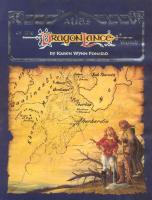Almost Every Culture in The World Has Held Celebrations of Thanks For A Plentiful Harvest [PDF]
Thanksgiving Almost every culture in the world has held celebrations of thanks for a plentiful harvest. The American Tha
31 0 175KB
Papiere empfehlen
![Almost Every Culture in The World Has Held Celebrations of Thanks For A Plentiful Harvest [PDF]](https://vdoc.tips/img/200x200/almost-every-culture-in-the-world-has-held-celebrations-of-thanks-for-a-plentiful-harvest.jpg)
- Author / Uploaded
- Jonathan David Tobar
Datei wird geladen, bitte warten...
Zitiervorschau
Thanksgiving Almost every culture in the world has held celebrations of thanks for a plentiful harvest. The American Thanksgiving holiday began as a feast of thanksgiving in the early days of the American colonies almost four hundred years ago. In 1620, a boat filled with more than one hundred people sailed across the Atlantic Ocean to settle in the New World. This religious group had begun to question the beliefs of the Church of England and they wanted to separate from it. The Pilgrims settled in what is now the state of Massachusetts. Their first winter in the New World was difficult. They had arrived too late to grow many crops; and without fresh food, half the colony died from disease. The following spring,the Iroquios Indians taught them how to grow corn, a new food for the colonists. they showed them other crops to grow in the unfamiliar soil and how to hunt and fish. In the autumn of 1621, bountiful crops of corn, barley,beans and pumpkins were harvested. The colonists had much to be thankful for, so a feast was planned. They invited the local Indian chief and ninety indians. The indians brought deer to roast with the turkeys and other wild game offered by the colonists. The colonists had learned how to cook cranberries and different kinds of corn and squash dishes from the Indians. To this first Thanksgiving, the Indians had even brought popcorn. In following years, many of the original colonists celebrated the autumn harvest with a feast of thanks. After the United States became an indepedent country one yearly day of thanksgiving, for the whole nation to celebrate. George Washington suggested the date November 26 as Thanksgiving Day. Then in 1864, at the end of a long and bloody civil war, Abraham Lincoln asked all Americans to set aside the last Thursday in November as a day of thanksgiving.
Casi todas las culturas del mundo se ha celebrado fiestas de gracias por una cosecha abundante. La Acción de Gracias estadounidense que comenzó como una fiesta de acción de gracias en los primeros días de las colonias americanas, hace casi cuatrocientos años. En 1620, un barco lleno de más de un centenar de personas navegó a través del Océano Atlántico para instalarse en el Nuevo Mundo. Este grupo religioso había comenzado a cuestionar las creencias de la Iglesia de Inglaterra y que quería separarse de ella. Los peregrinos se establecieron en lo que hoy es el estado de Massachusetts. Su primer invierno en el Nuevo Mundo fue difícil. Habían llegado demasiado tarde para cultivar la tierra, y sin alimentos frescos, la mitad de la colonia murió de la enfermedad. La primavera siguiente, los indios Iroquios les enseñaron a cultivar maíz, un alimento nuevo para los colonos. Les mostraron otros cultivos para crecer en el suelo desconocido y cómo cazar y pescar. En el otoño de 1621, se recogieron abundantes cosechas de maíz, cebada, frijoles y calabazas. Los colonos tenían mucho que agradecer, por lo que se planeó una fiesta. Invitaron al cacique local y noventa indios. Los indios trajeron ciervos para asar con los pavos y otros animales salvajes que ofrecen los colonos. Los colonos habían aprendido cómo cocinar los arándanos y diferentes tipos de maíz y calabaza platos de los indios. Para esta primera Acción de Gracias, los indios habían traído incluso palomitas de maíz. En los años siguientes, muchos de los colonos originales celebraron la cosecha de otoño con una fiesta de agradecimiento. Después de que Estados Unidos se convirtió en un país independiente un día anual de acción de gracias, para toda la nación para celebrar. George Washington sugirió la fecha de 26 de noviembre como el Día de Acción de Gracias. Luego, en 1864, al final de una larga y sangrienta guerra civil, Abraham Lincoln pidió a todos los estadounidenses a dejar de lado el último jueves de noviembre como un día de acción de gracias.








